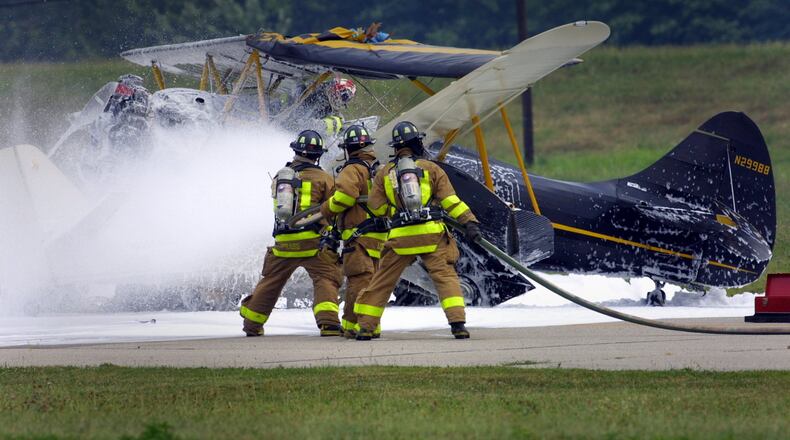Baldridge had proposed that the bill, introduced in 2019, take effect on Jan. 1, 2020. During the third reading Tuesday, the Ohio House Commerce and Labor Committee voted to accept an amendment to remove the specific date before voting the measure out of committee.
It’s not clear when or if HB 328 will go to the House floor for a vote. If it doesn’t pass by the end of this year, it would need to be reintroduced next year in the next legislative session.
Exposure to per- and polyfluoroalkyl substances ― or PFAS ― can affect pregnancy, increase cholesterol levels and cause some forms of cancer, according to the U.S. Centers for Disease Control and Prevention. Infants and children, pregnant and nursing women, and those who have a compromised immune system may be at a higher risk of health effects as well.
For decades, the Dayton Fire Department used PFAS-based foam at its fire training center, 200 McFadden Ave. The city stopped using the product in recent years. PFAS-based firefighter foams also have been used at Wright-Patterson Air Force Base.
The foam from the base and the city’s training center is believed to have contaminated parts of the Buried Valley Aquifer, which is the drinking water source for communities throughout the Miami Valley.
In 2018, Dayton filed a federal lawsuit against several companies that make firefighting foam to help with the cost of cleaning up PFAS. The companies include 3M Company, Buckeye Fire Equipment Company, Chemguard Inc., Tyco Fire Products L.P., and National Foam Inc.
HB 328 says PFAS-based firefighter foam can only be used for testing if the facility at which it’s being used has a way to contain the chemical and prevent it from going into the environment.
“Normally, we have to put the wet stuff on the red stuff, but when you’re dealing with fuel-based fires, you need to have that smothering effect,” Baldridge said in 2019. “There is technology today and there are Class B foams that are in place that departments can use in the emergency setting and in the training setting.”
About the Author
